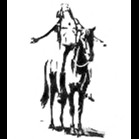Gang Up Two Ubc Satellite Dishes For More Signal?
-
Recently Browsing 0 members
- No registered users viewing this page.
-
Topics
-
-
Popular Contributors
-
-
Latest posts...
-
86
Trump has abandoned the Ukraine.
In your distorted brain maybe. The are regions of northern Ukraine that still speak polish (Lviv area). Hungarians are under a Russian puppet dictator, you wouldn't expect otherwise. Ukrainians regard Poles as their closest relatives, that's why most of them crossed over to Poland when the Russians invaded. And they were welcomed as long lost brothers and sisters. But then you'll only listen to Queer News and Faux News channels. Told you before, get your two neurons connected. Maybe you'll see the truth, Halleluiah! I gave you a new hat to wear Genrikh. Use it.... -
45
Government 'not satisfied' with BBC response on Bob Vylan, Demands Accountability
They're a "punk rap" duo. -
24
Travel AirAsia’s Game-Changing Leap: Low-Cost Flights from Southeast Asia to Europe & the US
Don't need any visa for India if just transiting through . Only need an India visa if taking an internal flight for a connection -
45
Government 'not satisfied' with BBC response on Bob Vylan, Demands Accountability
@josephbloggs your baiting troll post has been removed. Please discuss the topic not other posters. -
44
Are washer dryer combinations good?
Both delay stats could be used withe same, results. There is a delay start on most beadmaking machine, so you can have your bread warm & fresh -
24
USA Rumbling in the Swamp: Quiet Talks Begin to Launch a Viable Third Party in U.S. Politics
Multiple party systems work in loads of countries.- 1
-

-
-
Popular in The Pub









.thumb.jpeg.d2d19a66404642fd9ff62d6262fd153e.jpeg)



Recommended Posts
Create an account or sign in to comment
You need to be a member in order to leave a comment
Create an account
Sign up for a new account in our community. It's easy!
Register a new accountSign in
Already have an account? Sign in here.
Sign In Now